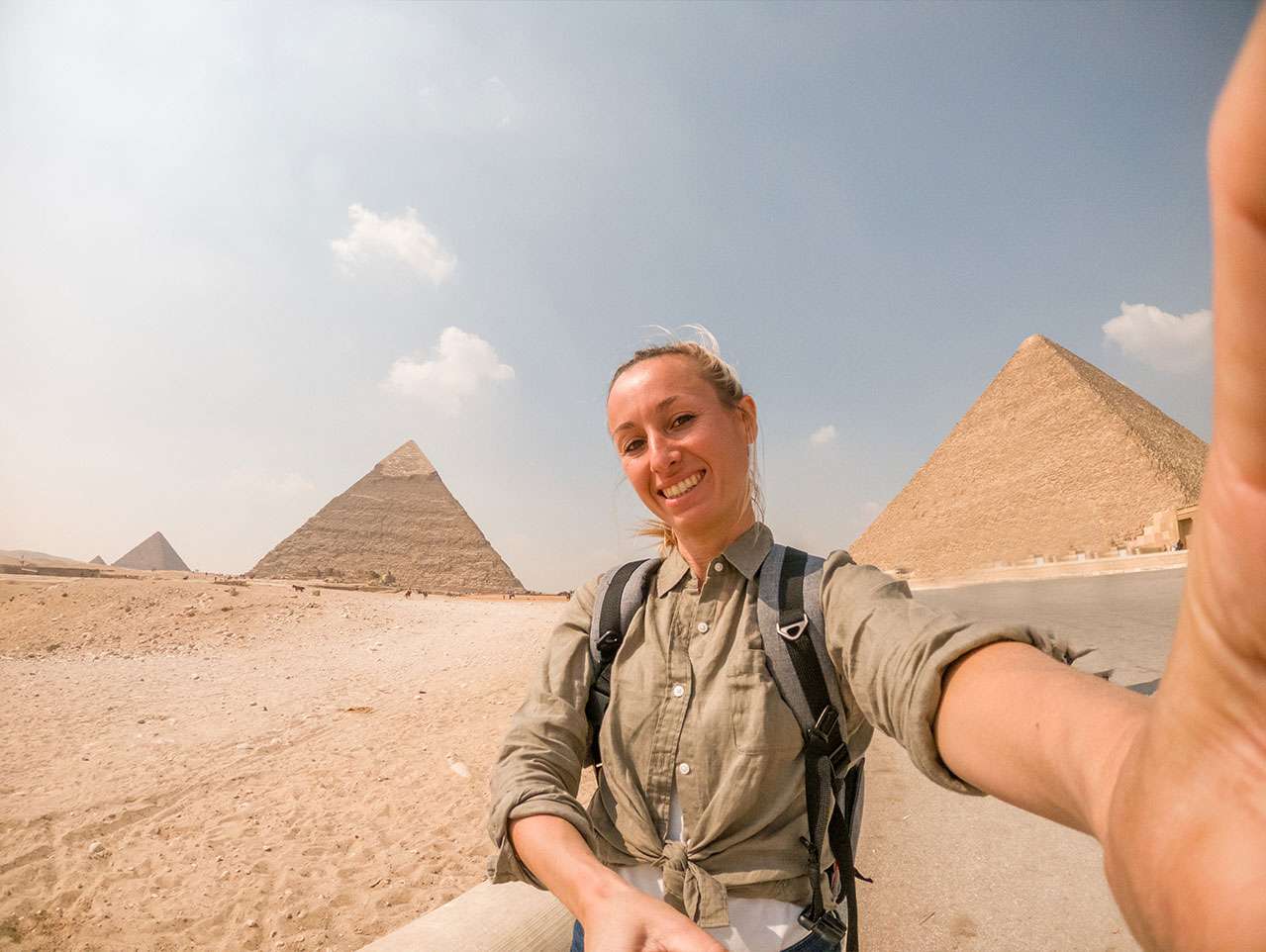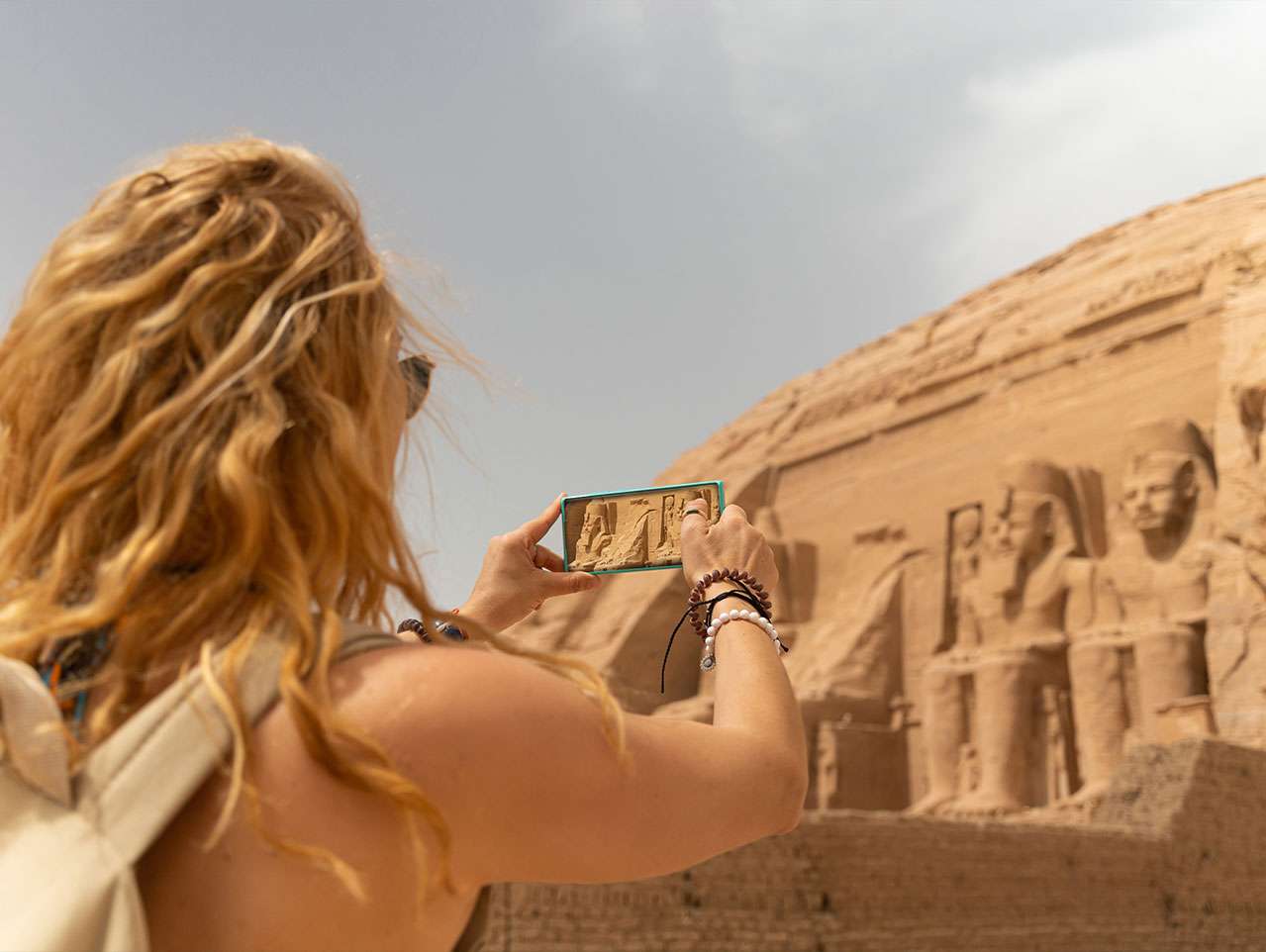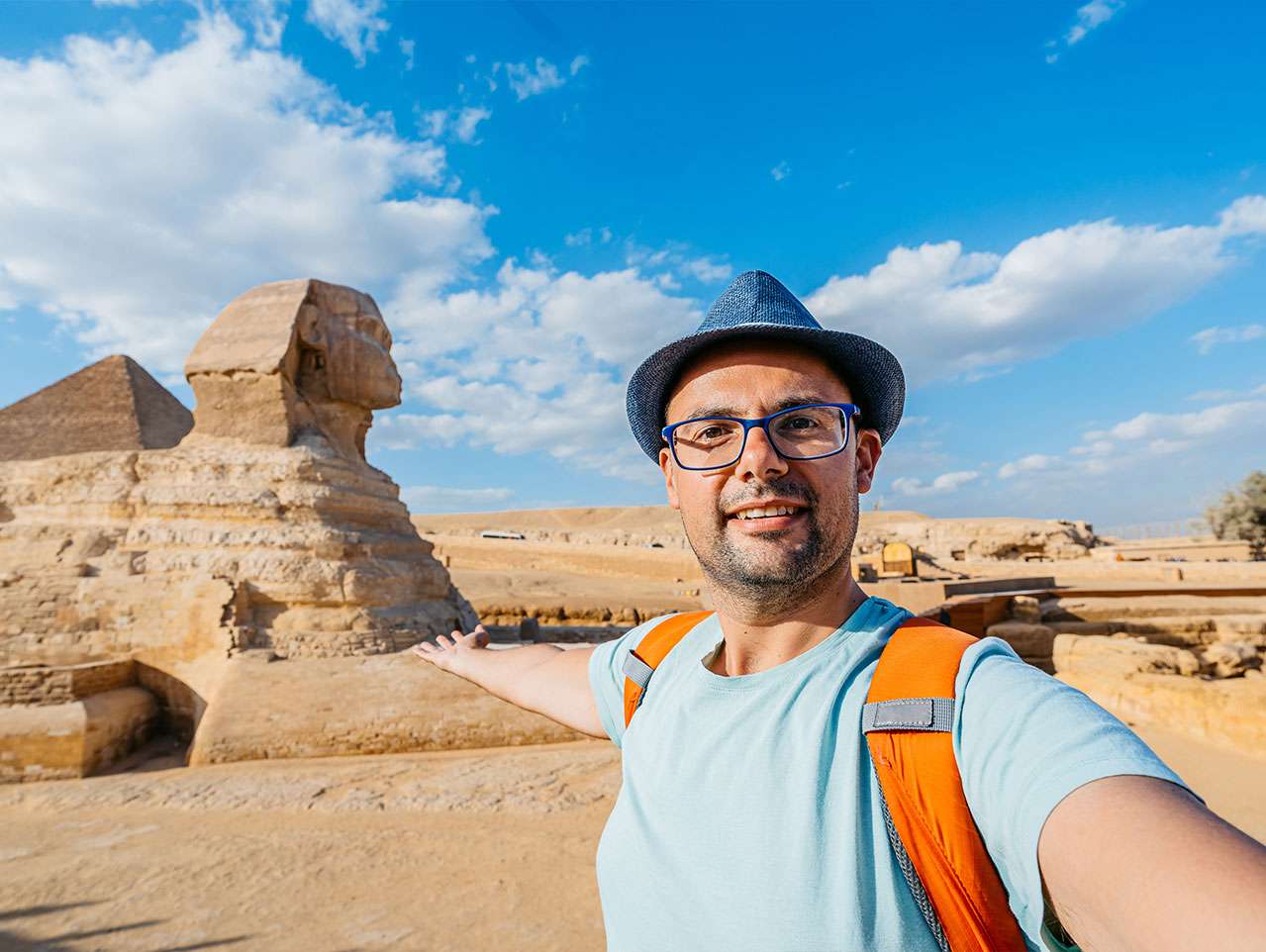
Djoser Step Pyramid in Saqqara
Around 4,700 years ago, the Step Pyramid of Djoser was constructed, with six levels above ground and a network of tunnels below. The third dynasty of Egypt was controlled by the ancient Egyptian pharaoh Djoser, commonly written Zoser (though his real name was Netjerykhet). Imhotep, a vizier who subsequently became God for his achievements, is credited by scholars with designing the pyramid.
Saqqara History
Egyptologist Mark Lehner stated in his book, "The Complete Pyramids: Solving the Ancient Mysteries," that the name "Djoser" was given to this ruler by New Kingdom visitors to the site more than a thousand years later.
The pyramid was originally a mastaba tomb, a flat-roofed structure with sloping sides. Through expansions, it was transformed into a 197-foot-high (60 meters) pyramid with six layers that were built on top of one another. 11.6 million cubic feet of stone and clay were used to build the pyramid. A labyrinth of around 3.5 miles in length is created by the tunnels that run underneath the pyramid. The majority of the Tura limestone that once covered the pyramid has since been removed.
Pharaohs were once interred in smaller mastaba tombs that thieves might access by excavating down from the top. It would have been very difficult for a thief to access the burial chamber by excavating it from the top thanks to the Step Pyramid of Djoser. The step pyramid may have been constructed by the ancient Egyptians as protection against grave thieves.
The stepped pyramid could have provided better security, but eventually, it was broken into, and today the majority of the burial treasures, including the mummy of Djoser, are lost.
However, not every mummy in the tomb has been taken. According to a report published in 2021 in the Journal of the General Union of Arab Archaeologists, recent archaeological work found three mummies belonging to the late period (about 712-332 B.C.) that were buried within Djoser's burial chamber (opens in a new tab). This indicates that during the late era, individuals had not only broken into the king's tomb but were also interring more mummies inside.

The Complex
A complex measuring 37 acres (15 hectares) stands at its epicenter. The complex is encircled by a sunken limestone wall, and on the southeast side are faux portals as well as actual colonnade entrances, according to Lehner.
On the pyramid's north side, there is a temple and a statue of the ruler. The statue is surrounded by a tiny stone building called a "Serdab," with the king's eyes visible through a hole in the serdab. A large court with an altar and stones that have been recognized as border marks is located to the south of the pyramid, according to Lehner.
A number of façade "dummy" structures were erected in the complex by the builders, including a number of chapels in the southeast and north and south pavilions on the pyramid's east side. According to Lehner, these buildings would have been used for religious purposes and, oddly enough, it appears that their builders partially buried them. A court where the monarch might perform the Heb-Sed jubilee festival, supposedly in the afterlife, is located on the southeast side of the complex, next to the mock chapels.
The mysterious "south tomb," complete with a chapel, is located near the complex's southernmost point. It has a network of tunnels that resemble those found below the actual pyramid.
Aidan Dodson and Salima Ikram described a chamber in the south tomb that contained carved limestone panels placed into the walls that showed the pharaoh competing in the heb-sed race (Thames & Hudson 2008). The heb-sed celebration honored kingship, and the king would parade around a wide open space. According to Dodson and Ikram, professors of Egyptology at the American University in Cairo and the University of Bristol, the south tomb may not have been used for burials, and its purpose is unclear.

Who is in The Djoser Pyramid Buried?
A maze of rooms and tunnels meander under the step pyramid, its heart a 90-foot-deep (28-meter) shaft that, at its base, houses King Djoser's burial chamber. Zahi Hawass, a former minister of antiquities in Egypt, noted in his article that although the mummy of King Djoser is no longer there, conservation work in the burial chamber has uncovered 32 shards of the king's granite sarcophagus. Archaeologists calculate that the king's sarcophagus once weighed 1.76 tons based on the remnants (1.6 metric tons).
The ceiling was originally going to be decorated with limestone blocks that were etched with five-pointed stars to give the appearance of a starry sky. According to Hawass, during conservation efforts, archaeologists discovered stones from this intended ceiling. However, for unidentified reasons, the builders rejected this design, leaving a plain granite ceiling in its place.

A 'Palace' Underground and Tunnels
There are two tunnels that split off in three different ways. Three magazines (storage) galleries, a dedicated tunnel for offerings, and an incomplete chamber may have constituted a type of underground "palace," although one for the dead, are all contained inside them.
Three fake entrances to the subterranean "palace" feature stone sculptures of the ruler performing rites. Lehner remarked in his study that the chamber is painted with blue faience tiles, possibly to replicate the reed matting seen in the king's actual palace in Memphis. This underground room was built in a hurry.
40,000 stone vessels, many of which belonged to the king's predecessors, were found in a tunnel on the east side of the pyramid. Lehner said that nearby archaeologists have discovered sarcophagi and human bones, including the hip bone of a lady who was around 18 years old when she passed away. According to Lehner's research, some of the female bones belonged to generations earlier than Djoser's, raising questions about their identities.

related tours

Pyramids and The Nile
8 Days / 7 Nights
From
$ 1755

Pyramids, Nile and Sharm El Sheikh Package
12 Days / 11 Nights
From
$ 2370

Best Travel Packages to Egypt with Abu Simbel
8 Days / 7 Nights
From
$ 1445

Egypt Tour : Giza Pyramids & Nile Cruise
8 Days / 7 Nights
From
$ 1099
